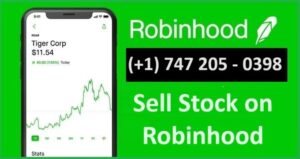Navigating the world of stock trading can be complex, especially when it comes to understanding the nuances of selling stocks and withdrawing funds on platforms like Robinhood. Many users have reported encountering issues when attempting to withdraw funds after selling their stocks. This article aims to provide a comprehensive guide on why you might face challenges in withdrawing funds from Robinhood after selling stocks and what steps you can take to resolve these issues.

Understanding the Stock Settlement Process
When you sell a stock on Robinhood, or any other trading platform, the process isn’t instantaneous. There’s a mandatory period known as the “settlement period,” which typically lasts two business days following the sale of your stocks. During this period, the proceeds from your sale are not immediately available for withdrawal. This delay is due to the time it takes for the transaction to be finalized and for the funds to be transferred between the involved parties.
The T+2 settlement cycle (Trade date plus two days) is a standard in the financial industry, ensuring that all necessary documentation and funds are in place before completing the transaction. It’s essential to understand that you won’t be able to withdraw the proceeds from a stock sale until the settlement process is fully completed.
Why You Might Be Unable to Withdraw Recently Sold Stocks on Robinhood
Several factors could prevent you from withdrawing your funds after selling stocks on Robinhood. Below are some of the most common reasons:
Unsettled Funds: As mentioned earlier, if your funds are still within the settlement period, they are classified as unsettled funds. Robinhood will not allow you to withdraw these funds until the settlement is complete.
Account Restrictions: In some cases, your account might be subject to restrictions. This could happen if Robinhood detects any suspicious activity or if there are outstanding issues with your account, such as insufficient funds to cover a margin call. When your account is restricted, you may not be able to withdraw your funds until the issue is resolved.
- Margin Accounts: If you have a margin account, it’s essential to understand that the funds from the sale of stocks might first be used to cover any outstanding margin balance before they become available for withdrawal. Robinhood will automatically use your proceeds to pay down any margin loan you have taken, which might leave you with less cash available for withdrawal than anticipated.
- Regulatory Holds: Regulatory holds may be placed on your account if Robinhood is required to comply with specific regulations. These holds can delay your ability to withdraw funds, especially if there are pending investigations or audits.
- Insufficient Funds: Another common issue is when users attempt to withdraw more funds than they have available. It’s crucial to ensure that the amount you’re trying to withdraw does not exceed the available balance in your account after accounting for unsettled funds, margin loans, and any fees that may apply.
- Bank Account Issues: Sometimes, the problem might not be with Robinhood but with your linked bank account. Issues such as incorrect account details, a closed bank account, or bank rejections can prevent your withdrawal from being processed successfully.
Steps to Resolve Withdrawal Issues on Robinhood
If you’re facing difficulties withdrawing funds after selling stocks on Robinhood, follow these steps to resolve the issue:
- Wait for the Settlement Period to Complete: The simplest solution is to wait until the settlement period has passed. Once the funds are settled, they will be available for withdrawal. Keep in mind that weekends and holidays can extend the settlement period.
- Check Your Account Status: Log into your Robinhood account and check for any notifications or alerts. If your account is restricted, follow the instructions provided by Robinhood to resolve the issue. This may involve verifying your identity, resolving margin calls, or contacting customer support.
- Review Your Margin Balance: If you have a margin account, review your margin balance to understand how much of your withdrawal is being applied to your margin loan. Consider reducing your margin usage if you frequently need to access cash from your account.
- Verify Bank Account Details: Ensure that the bank account linked to your Robinhood account is correct and active. Double-check the account number and routing number to avoid any mistakes. If your bank account has been closed or changed, update the details in your Robinhood account settings.
- Contact Robinhood Support: If you’ve waited for the settlement period to complete, verified your account status, and checked your bank details but are still unable to withdraw, it’s time to contact Robinhood support. Provide them with all relevant information, including any error messages you’ve received, and ask for assistance in resolving the issue.
Preventing Future Withdrawal Issues
To avoid encountering withdrawal issues in the future, consider the following tips:
- Plan Ahead: If you know you’ll need access to funds, plan your stock sales accordingly. Sell your stocks a few days in advance to account for the settlement period.
- Monitor Your Account Regularly: Keep an eye on your account status, margin balance, and any notifications from Robinhood. Regular monitoring can help you catch and resolve issues before they affect your ability to withdraw funds.
- Maintain Accurate Bank Details: Ensure that your bank details are always up to date. If you change banks, update your Robinhood account information as soon as possible to prevent any withdrawal delays.
Conclusion
Withdrawing funds after selling stocks on Robinhood can sometimes be a frustrating experience due to the settlement period and other potential issues. By understanding the factors that can impact your ability to withdraw funds and taking proactive steps to resolve and prevent these issues, you can ensure a smoother experience when managing your investments on Robinhood.

